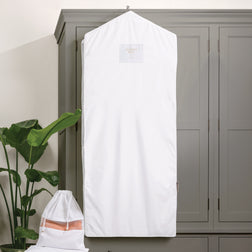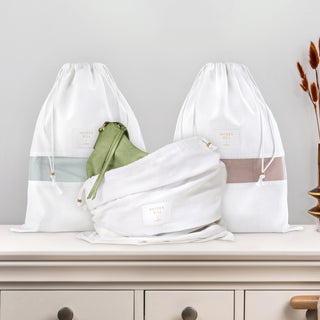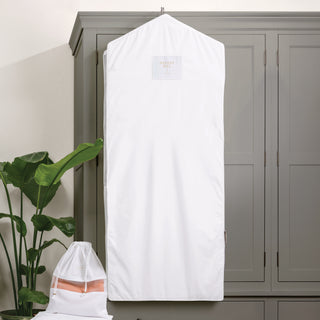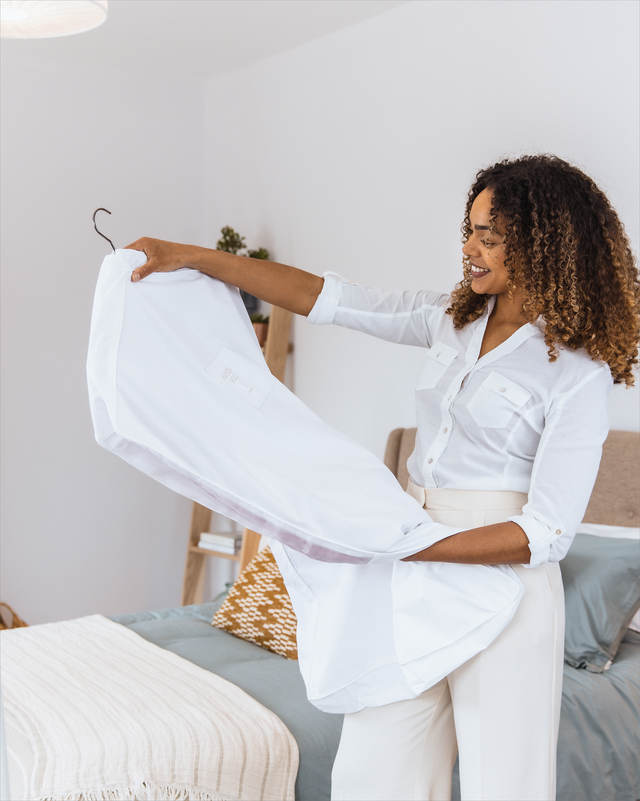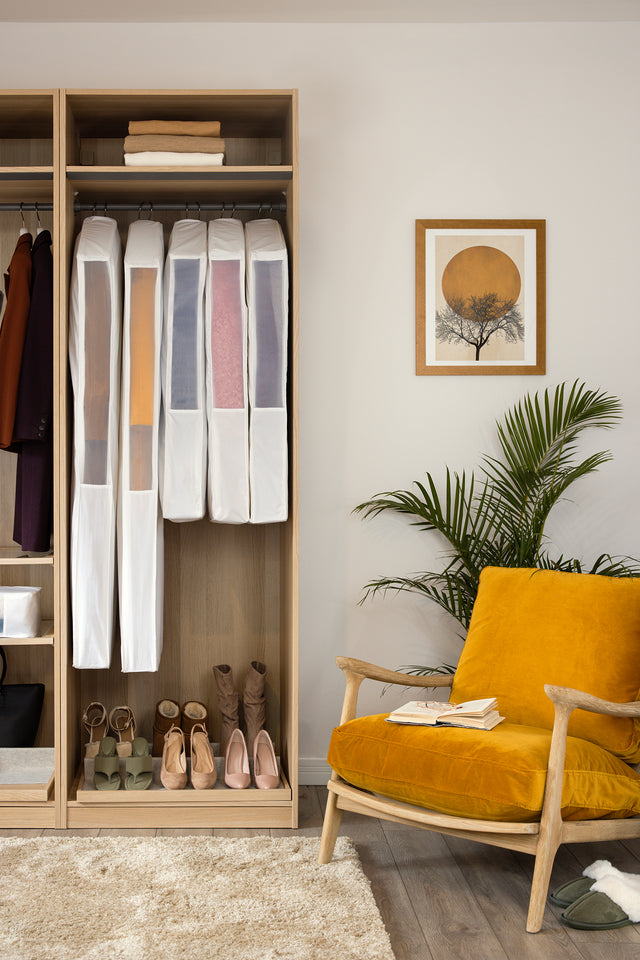To adequately compare natural and synthetic fabrics, let’s take a look at the advantages and most popular types of each.
Though synthetic fibres have only been on the market for a couple hundred years, they are now competing in production and distribution with natural fabrics that have been around for thousands of years.
This fast rise in consumption is due to the high demand for affordable, fast fashion. Synthetic fabrics can be found everywhere– home decor, clothing, bedding, and even in commercial environments. They certainly have advantages, such as durability, conducive to mass production, and resistance to stains and water.
But synthetic fabrics have a significant disadvantage; they are destructive to the environment.
Because they cannot be recycled or repurposed, synthetic materials eventually end up in a landfill where they take from 20 to 200 years to break down into smaller pieces called microplastics. These tiny pieces of plastic find their way into our oceans, food, water supply, and into wildlife and their food chains. Although it is almost impossible to identify the amount of microplastics we ingest on a daily basis, it is certain that these plastic particles are harmful to our health and are responsible for the decline of our wildlife and our oceans.

And though natural fabrics still have some effect on the environment, that impact is significantly lower than that of synthetics.
To adequately compare natural and synthetic fabrics, let’s take a look at the advantages and most popular types of each.
Synthetic Fabrics
Synthetics are man-made fabrics that are created using chemical processes in which a polymer is extracted using a spinneret and turned into usable fibre. Some popular synthetic fibres are polyester, rayon, spandex, and microfibre.
Polyester
As a whole, synthetic fabrics have grown in popularity over the last 50 years, but the demand for polyester, in particular, has doubled.
Polyester is a synthetic fibre that is created from coal and petroleum. It is soft, durable, and fast-drying and also easily maintains its shape and resists wrinkles. Polyester is a textile that works well when combined with natural fibres like cotton or wool, and with artificial fibres to increase durability and make the fabric easier to wash.
However, polyester is not a breathable material and does a poor job of absorbing liquids, so it is not ideal in warm weather.
Rayon
Rayon is a semi-synthetic fibre made from regenerated cellulose. Though rayon is made from plant fibres, it is considered semi-synthetic because of its production process, which uses chemicals such as sodium hydroxide and carbon disulphide. This synthetic fibre has no static or pilling issues, has excellent draping qualities, a high absorbency, and a brilliant look. Rayon can imitate the look of silk, wool, and other fabrics.
Spandex

Spandex is a synthetic fibre characterised by its extreme elasticity. The production process for spandex includes blending several types of fibres that result in its ability to stretch. This fabric is lightweight, breathable, and doesn't restrict movement, so it's most commonly used in athletic wear and swimwear. Spandex is also blended with other fabrics in the production of jeans and hosiery.
Microfibre
Microfibre is made from extremely finely woven filaments of acrylic, nylon, polyester, or rayon. Its fibres are incredibly thin and short, with a diameter of fewer than 10 micrometres. This synthetic fabric can be woven so tightly that wind, rain, or cold cannot penetrate the cloth, making it perfect for use in raincoats.
Advantages of Synthetic Fibres
- Synthetic fibres are more durable than natural fibres.
- Synthetic fibres have stretching and waterproofing functions.
- Synthetic fibres are more water and stain resistant than natural fibres.
Natural Fabrics
Animals, plants, and minerals produce fibres that are used to manufacture textiles. These raw, natural materials undergo a process in which they are spun into threads and then woven or knit into natural fabrics and yarns. Some of the most popular natural fibres are cotton, wool, silk and linen.
Cotton
Cotton is one of the most widespread natural fabrics, and it accounts for 40 percent of clothing manufactured around the world. This natural fabric is known for its softness, which is courtesy of cotton's primary component, cellulose. Cotton clothing is a favourited choice for many, especially for pyjamas, undergarments, baby clothes, or t-shirts. This natural fibre is hypoallergenic, making it the perfect fit for those with sensitive skin.

Types of cotton include natural cotton, organic cotton, denim, and canvas.
Wool
Wool is a natural fabric that comes from the hair of sheep, goats, alpacas, llamas, and/or various other animals. This fabric provides warmth, absorbance, and durability in the form of sweaters, shawls, and winter hats and gloves. Some wool fabrics are water-resistant, making them the perfect choice for outerwear and cold weather clothes.
Some types of wool fabrics are cashmere, angora, alpaca mohair, and camel hair wool.
Silk
Silkworms, spiders, and other insects can all produce filaments that are used to make silk. But the mulberry silkworm is the species most commonly credited with modern day silk production.
Silk is beloved not only for its luxurious feel, but for its durability and moisture-wicking ability, which means it will keep you cool in the summer and warm in the winter. Silk is ideal for delicate skin, like those with eczema or psoriasis, because of its softness.
Some types of natural silk include charmeuse, chiffon, georgette, organza, velvet and silk satin.
Linen
Linen is some of the oldest fabric in the world; it dates as far back as ancient Egypt. This natural fabric comes from the fibres of the flax plant stem and is a favourited of warm climates and seasons. Linen is strong, lightweight, naturally hypoallergenic, and very breathable - a perfect choice for a day in the sun.

Types of linen include plain-woven linen, loosely woven linen, sheeting linen, damask linen, and towelling.
Advantages of Natural Fibres
- Most natural fibres are bio-degradable and fully recyclable.
- Natural fibres are naturally hypoallergenic.
- Natural fibres have natural antibacterial properties, resist mildew, and block UV radiation.
- Natural fibres are breathable and heat-responsive.
- Some natural fibres can be grown organically.
- Natural fibres have a moisture-wicking ability that draws dampness away from the skin.
FAQs
1. Is natural or synthetic fabric better?
The reason you need a particular item determines whether it should be made of natural or synthetic fabric. Because synthetic fabrics are so harmful to our oceans, wildlife, and bodies, if it is possible to use natural fabrics, do so. However, in rare instances when you must have clothing that is highly elastic or waterproof, a synthetic fabric may be the better choice.
2. What is the difference between natural and synthetic clothes?
Natural fabrics are derived from plants and animals, while synthetic fabrics are made from chemical compounds. Both types of fabric differ greatly in terms of breathability, weight, skin sensitivity, durability, cost, and absorption. They each have benefits and drawbacks, and each is valued in the textile industry for different reasons.
3. Why are synthetic clothes not suitable for wearing in summer?
Synthetic clothes have poor insulation as the mono-fibres do not have air pockets that will trap air like cotton and other natural fibbers. They tend to stick to the body when it is hot and sweaty because they cannot absorb moisture. Synthetic fibbers are easily susceptible to heat damage. All of these reasons make synthetics a poor choice for a summer outfit.

Hayden Hill is committed to protecting the environment by using natural fibbers in the production of our products. Our garment bags are made of 100% organic, soft cotton that is environmentally friendly and allows your favourite pieces to breathe while keeping them protected from damage.

